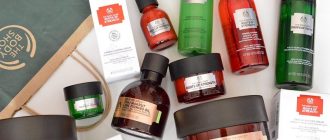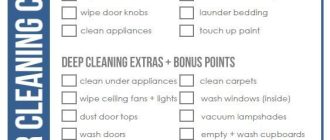
Why Rust is the Enemy and How to Combat It
Rust is the enemy of any metal surface. Whether it’s a car, a fence, or a piece of machinery, rust can slowly eat away at the material, causing irreparable damage. That’s why it is important to combat rust before it becomes a problem.
But why is rust such a threat? Rust is formed when metal surfaces come into contact with moisture and oxygen. The combination of these elements initiates a chemical reaction that causes the metal to corrode. Once rust starts to form, it can spread quickly, weakening the structure of the metal and compromising its integrity.
So how can you effectively combat rust? The key is prevention. By applying a protective coating to metal surfaces, you can create a barrier that prevents moisture and oxygen from reaching the metal. These coatings can be as simple as a layer of paint or as advanced as specialized rust inhibitors.
Another effective strategy to combat rust is regular maintenance. By inspecting metal surfaces for signs of rust and addressing them promptly, you can stop rust in its tracks before it has a chance to spread. This can involve cleaning the surface, removing any existing rust, and applying a new protective coating.
Preventing Rust: Effective Strategies to Keep Rust at Bay
Rust is the enemy of any metal object. It can silently eat away at your precious possessions, making them weak and vulnerable. That’s why it’s important to know how to prevent rust and protect your belongings from this destructive force.
So, how can you combat rust? The first step is understanding why it occurs. Rust, also known as iron oxide, is formed when iron or metal comes into contact with oxygen and water. This combination creates a chemical reaction that slowly corrodes the metal surface.
To prevent rust, you need to disrupt this reaction. Here are some effective strategies:
1. Coat the metal surface: Applying a protective coating, such as paint or a clear sealant, can create a barrier between the metal and moisture. This prevents rust from forming and can also enhance the appearance of the object.
2. Keep it dry: Moisture is the main culprit when it comes to rust. Make sure to keep your metal objects dry by storing them in a dry environment or using a dehumidifier. If your belongings do get wet, dry them thoroughly to prevent any moisture from lingering and causing rust.
3. Use rust inhibitors: There are many products on the market specifically designed to prevent rust. These inhibitors can be applied to metal surfaces to create a protective layer and prevent rust from forming. Be sure to follow the instructions on the product for the best results.
4. Regular maintenance: Regularly inspect and clean your metal objects. Remove any dirt or debris that can trap moisture and create a favorable environment for rust. If you notice any signs of rust, act quickly to remove it before it spreads.
5. Store properly: When storing metal objects, make sure they are stored in a way that promotes air circulation. Avoid stacking items on top of each other, as this can create pockets of moisture and increase the likelihood of rust.
In conclusion, preventing rust is essential in preserving the life and appearance of your metal objects. By understanding how rust forms and implementing these strategies, you can keep rust at bay and enjoy your belongings for years to come.
Understanding Rust Formation: What Causes Rust and How it Spreads
Rust is the enemy of any metal object, eroding its surface and compromising its structural integrity. But what exactly causes rust to form, and why is it so difficult to combat?
Rust formation is a chemical reaction that occurs when iron or steel comes into contact with oxygen and water. This process, known as oxidation, leads to the formation of iron oxide, or rust. It is a natural process that happens over time, as moisture in the air reacts with the surface of the metal.
One key factor in rust formation is the presence of moisture. When metal is exposed to water or high humidity levels, it provides the necessary conditions for rust to form. This is why metal objects left outdoors or in damp environments are more prone to rusting.
Another important factor is the presence of oxygen. Rust needs oxygen to form, so any metal object that is exposed to air is at risk. This is why proper storage and protection of metal objects is crucial in combatting rust.
Rust not only forms on the surface of the metal, but it can also spread beneath the surface, gradually weakening the entire structure. This makes it important to address rust as soon as it is detected, as it can quickly spread and cause irreversible damage.
To combat rust effectively, it is essential to understand its causes and how it spreads. By minimizing exposure to moisture and oxygen, applying rust-resistant coatings, and implementing regular maintenance and inspections, you can prevent rust formation and ensure the longevity of your metal objects.
Remember, rust is the enemy, and understanding how it forms and spreads is the key to combatting it!
The Importance of Regular Cleaning: Removing Rust-Inducing Substances
Rust is the enemy of any metal object or surface. It is a result of the chemical reaction between iron, oxygen, and moisture. If left unchecked, rust can lead to the deterioration and weakening of the metal, ultimately causing structural damage. That is why it is crucial to combat rust and take preventive measures.
Regular cleaning plays a significant role in rust prevention. When we clean metal surfaces regularly, we remove rust-inducing substances that may be present, such as dirt, dust, salt, and other corrosive materials. These substances can contribute to the formation of rust by acting as catalysts for the chemical reaction.
So, how do we combat rust-inducing substances through regular cleaning? It starts with identifying the areas or objects that are most susceptible to rust. This could include outdoor furniture, tools, vehicles, or any metal surface that is exposed to the elements or moisture.
Once identified, it is important to establish a cleaning routine. Regularly clean and dry these metal objects or surfaces, especially after they have been exposed to moisture or corrosive substances. Use appropriate cleaning solutions, such as mild soaps or specialized rust removers, and make sure to rinse and dry thoroughly.
Additionally, it is important to keep these areas or objects properly maintained and protected. Applying protective coatings, such as paint or sealants, can create a barrier between the metal and the environment, preventing moisture and oxygen from coming into contact with the surface.
In conclusion, the importance of regular cleaning cannot be overstated when it comes to combating rust. By removing rust-inducing substances through regular cleaning and maintenance, we can significantly reduce the risk of rust formation and prolong the lifespan of metal objects or surfaces.
Creating a Protective Barrier: Using Rust Inhibitors and Coatings
Rust is the enemy of any metal object or structure. Its destructive nature can cause significant damage and shorten the lifespan of valuable assets. That is why it is crucial to combat rust and prevent its formation. Rust inhibitors and coatings are effective strategies for creating a protective barrier that stops rust in its tracks.
But why is rust such a formidable enemy? Rust is formed when iron or steel reacts with moisture and oxygen, resulting in the formation of iron oxide. This chemical process weakens the metal’s structural integrity, leading to corrosion and eventual failure. Rust can be particularly problematic in environments with high humidity or exposure to water, such as coastal areas or industrial settings.
So, how do rust inhibitors and coatings help combat rust? Rust inhibitors are chemical compounds that can be applied to metal surfaces to slow down or prevent the formation of rust. These inhibitors work by forming a protective film on the metal surface, blocking moisture and oxygen from coming into contact with the metal. This barrier inhibits the rusting process and extends the lifespan of the metal object or structure.
On the other hand, coatings serve as a physical barrier between the metal and the environment. Coatings can be paint, epoxy, or other protective layers that are applied to the metal surface. These coatings not only provide aesthetic appeal but also offer excellent protection against rust. They act as a shield, preventing moisture and oxygen from reaching the metal and causing corrosion.
Additionally, rust inhibitors and coatings can be enhanced with other properties to provide better protection. Some coatings have UV resistance, which helps protect against sun damage. Others have high heat resistance or chemical resistance, making them suitable for specific environments. By selecting the right rust inhibitors and coatings, you can tailor the level of protection to suit your unique needs.
In conclusion, rust inhibitors and coatings are powerful tools in the fight against rust. Their ability to create a protective barrier prevents the formation and further corrosion of metal objects or structures. By understanding why rust is such a formidable enemy and how rust inhibitors and coatings work, you can effectively combat rust and prolong the lifespan of your valuable assets.
Proper Storage: Storing Metal Objects in Rust-Resistant Environments
The enemy of metal objects is rust. If left unchecked, rust can quickly create unsightly and damaging corrosion, weakening the structure and compromising the integrity of the metal. That’s why it is crucial to combat rust by storing metal objects in rust-resistant environments.
Proper storage is essential in preventing rust formation. The first step is to keep metal objects away from moisture. Moisture is the primary catalyst for rust, as it reacts with iron and oxygen to create the iron oxide commonly known as rust. To prevent this reaction, it is crucial to store metal objects in a dry environment. This can involve using dehumidifiers or ensuring the storage area is well-ventilated.
In addition to keeping metal objects dry, it is also important to keep them away from direct contact with water. This means storing them in areas where they won’t be exposed to rain or splashes of water. If storing metal objects outdoors, it is imperative to use waterproof covers or storage containers to protect them from precipitation.
An effective strategy to combat rust is to store metal objects in rust-resistant containers or packaging. Many manufacturers offer specialized storage solutions, such as moisture-absorbing packets or anti-corrosion films, which create a barrier between the metal and the surrounding environment. These treatments can provide an extra layer of protection against rust formation.
Another way to prevent rust is to use desiccants, such as silica gel packets, inside the storage containers. Desiccants help absorb excess moisture, preventing the conditions that promote rust. Regularly checking and replacing these desiccants can help maintain a rust-resistant environment.
When storing metal objects, it is also essential to keep them properly organized and separated. Stacking metal objects on top of each other can create areas of trapped moisture, leading to rust formation. To combat this, it is best to store metal objects with space between them or to use protective materials, such as felt or rubber pads, to prevent direct contact between them.
Finally, regular inspection and maintenance are key steps in rust prevention. By regularly checking metal objects for signs of rust and addressing any issues promptly, you can stop rust in its tracks before it has a chance to spread and cause significant damage. Cleaning metal objects regularly and applying rust inhibitors or protective coatings can also help maintain their rust-free condition.
Proper storage is essential in combating rust, the enemy of metal objects. By following these strategies and implementing rust-resistant environments, you can ensure that your metal objects remain in pristine condition, free from the damaging effects of rust.
Managing Humidity: Controlling Moisture to Prevent Rust
Rust is the enemy of metal surfaces, causing damage, corrosion, and decreased longevity. It is important to understand why moisture is the primary catalyst for rust formation and how to combat it.
Moisture, in the form of water vapor in the air, is unavoidable. However, controlling it is crucial in preventing rust. High humidity levels create an ideal environment for rust to thrive, as it accelerates the oxidation process of metal. This is particularly true in areas with saltwater or highly acidic environments, which further increase the corrosive effects on metal surfaces.
So, how can you combat moisture and control humidity to prevent rust? One effective strategy is to invest in dehumidifiers. Dehumidifiers are designed to remove excess moisture from the air, thus reducing humidity levels in enclosed spaces. Placing dehumidifiers in areas prone to rust, such as basements, garages, or storage rooms, can significantly decrease the risk of rust formation by minimizing moisture presence.

Another preventive measure is proper ventilation. Proper airflow allows moisture to escape and prevents its accumulation in stagnant areas. Ventilation systems, such as fans or air exchangers, should be installed in enclosed spaces to promote air circulation and reduce humidity levels.
Additionally, using moisture-absorbing materials, such as desiccants or silica gel packets, can help combat rust. These materials work by absorbing moisture from the air, effectively reducing humidity levels. Placing these moisture absorbers near metal surfaces or inside storage containers can provide an extra layer of protection against rust formation.
Lastly, regular maintenance is key in managing humidity and preventing rust. Inspect metal surfaces for signs of corrosion, and promptly address any issues. Additionally, keep an eye on moisture levels by using hygrometers, which measure humidity. With regular monitoring and immediate action, you can prevent rust before it has a chance to cause significant damage.
| – Moisture is the primary catalyst for rust formation. |
| – High humidity levels accelerate the corrosion process. |
| – Dehumidifiers, ventilation, and moisture-absorbing materials are effective strategies to combat rust. |
| – Regular maintenance and monitoring are crucial to prevent rust damage. |
Applying Rust-Proof Paint: Enhancing Metal Surfaces with Anti-Rust Coatings
Rust is the enemy of metal surfaces. It can cause structural damage, decrease the aesthetic appeal, and compromise the performance of metal objects. That’s why it is important to combat rust and protect metal surfaces from its destructive effects.
One effective strategy to combat rust is to apply rust-proof paint or anti-rust coatings. These coatings create a protective barrier that prevents moisture and oxygen from reaching the metal surface, which are the main culprits behind rust formation.
So, how does rust-proof paint work? The answer lies in its composition. Typically, rust-proof paint contains special additives, such as zinc or aluminum, that act as sacrificial anodes. These sacrificial anodes corrode first when exposed to moisture and oxygen, diverting the rusting process away from the metal surface. Additionally, the paint forms a physical barrier that prevents these corrosive elements from reaching the metal, further enhancing its protective effect.
But why is it important to enhance metal surfaces with anti-rust coatings? The answer is simple: prevention is better than cure. By applying rust-proof paint, you can save yourself from the hassle and expense of repairing or replacing rust-damaged metal objects in the future. It also helps in preserving the appearance and longevity of metal surfaces.
When applying rust-proof paint, it is crucial to follow the manufacturer’s instructions and prepare the metal surface properly. This typically involves cleaning the surface to remove any dirt, rust, or grease, and ensuring it is dry and free of contaminants. Some coatings may require a primer or multiple layers for optimal protection, so be sure to read the instructions carefully. Applying the paint evenly and allowing sufficient drying time is also important to achieve the desired results.
In conclusion, applying rust-proof paint or anti-rust coatings is an effective strategy to combat rust and protect metal surfaces. It creates a barrier that prevents moisture and oxygen from reaching the metal, thereby inhibiting rust formation. By enhancing metal surfaces with anti-rust coatings, you can prolong their lifespan, maintain their appearance, and save yourself from potential repair or replacement costs in the future.
Regular Inspection: Detecting and Addressing Rust at an Early Stage
Rust is the enemy of any metal surface, causing gradual deterioration and weakening its structural integrity over time. That’s why it is crucial to combat rust through regular inspection, to detect and address it at an early stage.
Regular inspection is essential because rust often starts forming in hidden or hard-to-reach areas, making it challenging to notice until it has already caused significant damage. By conducting regular inspections, you can identify rust formation in its early stages, allowing for prompt and effective action to prevent further corrosion.
So, how exactly can you combat rust through regular inspection? Here are a few strategies:
- Visual Inspection: Regularly inspect all metal surfaces for any signs of rust, such as discoloration, bubbling paint, or pitting.
- Moisture Detection: Use moisture detection devices to identify areas with high humidity or moisture, as these are prime conditions for rust formation.
- Professional Assessment: Schedule regular inspections by professionals who are trained to identify rust and assess its severity.
- Preventive Measures: Implement preventive measures such as applying protective coatings or rust inhibitors to metal surfaces.
By incorporating regular inspection into your maintenance routine, you can detect and address rust at an early stage, preventing costly repairs and preserving the longevity of your metal surfaces. So, don’t wait until it’s too late – start combating rust today!
Prevention through Lubrication: Lubricants to Reduce Friction and Rust
Rust is the enemy of metal. It weakens structures, corrodes surfaces, and can cause machinery to fail. That’s why it’s essential to combat rust before it becomes a problem. One effective strategy is prevention through lubrication.
But how does rust occur and why is it such a nuisance? Rust is a chemical reaction that happens when iron or steel comes into contact with oxygen and moisture. This reaction leads to the formation of iron oxide, which is more commonly known as rust. It’s a gradual process, but one that can significantly deteriorate metal over time.
Lubrication plays a crucial role in preventing rust because it reduces friction between metal surfaces. When two metal surfaces rub against each other, they generate heat, which can accelerate the corrosion process. By applying a lubricant, such as oil or grease, a protective film is created that acts as a barrier between the metal and its environment.
- Oils: There are various types of oils that can be used as lubricants. Some oils, such as mineral oil, are suitable for general-purpose lubrication. Others, like synthetic oils, perform better under extreme conditions. Choosing the right oil depends on the specific application and the level of protection required.
- Grease: Grease is a lubricant that is thicker and sticky in consistency compared to oil. It’s often used in areas where high temperatures, heavy loads, or water exposure are present. Grease provides long-lasting protection and is suitable for applications where frequent reapplication is not possible.
- Penetrating oils: Penetrating oils are designed to seep into tight spaces and displace moisture. They are useful for loosening rusted or stuck parts and can help prevent further rust formation. These oils often have low viscosity, allowing them to flow into tight gaps effectively.
No matter what type of lubricant you choose, regular maintenance is crucial. Applying lubricant in the right intervals ensures that the protective film remains intact and continues to prevent friction and rust. Additionally, it’s important to clean the surfaces before applying lubricant, as dirt and other contaminants can interfere with its effectiveness.
Preventing rust through lubrication is a cost-effective and efficient way to extend the lifespan of metal structures and equipment. By understanding how rust occurs and using the appropriate lubricants, you can combat this common problem and keep your metal assets in optimal condition.
Questions and answers:
What is rust and what causes it?
Rust is a reddish-brown coating that forms on iron or steel when it is exposed to oxygen and moisture. The combination of these two elements triggers a chemical reaction known as oxidation, which causes the metal to corrode and form rust.
What are some effective strategies to prevent rust?
There are several strategies you can use to prevent rust. One of the most important is to keep the metal surface dry. Moisture is a key factor in the formation of rust, so using a dehumidifier or ensuring proper ventilation in the area can help prevent rust from forming. Additionally, applying a protective coating such as paint, varnish, or a rust inhibitor can create a barrier between the metal and the moisture. Regularly cleaning and inspecting the metal surface is also helpful in identifying and treating any early signs of rust.
How can I remove rust from metal surfaces?
There are several methods you can use to remove rust from metal surfaces. One common method is to use a mixture of vinegar and baking soda. Simply create a paste using equal parts vinegar and baking soda, apply it to the rusty area, and let it sit for a few hours before scrubbing it off with a brush. Another method is to use a rust remover product specifically designed for this purpose. These products often contain chemicals that dissolve the rust, making it easier to remove. For larger or more stubborn rust spots, you can use a wire brush or sandpaper to manually scrub off the rust.
Can rust be prevented in outdoor furniture?
Yes, rust can be prevented in outdoor furniture. One of the best ways to prevent rust in outdoor furniture is to choose materials that are resistant to rust, such as stainless steel or aluminum. These materials are less likely to corrode when exposed to moisture and oxygen. Additionally, regularly cleaning and maintaining the furniture is important in preventing rust. This includes removing any dirt or debris that may trap moisture and applying a protective coating, such as paint or a rust inhibitor, to create a barrier between the metal and the elements.




